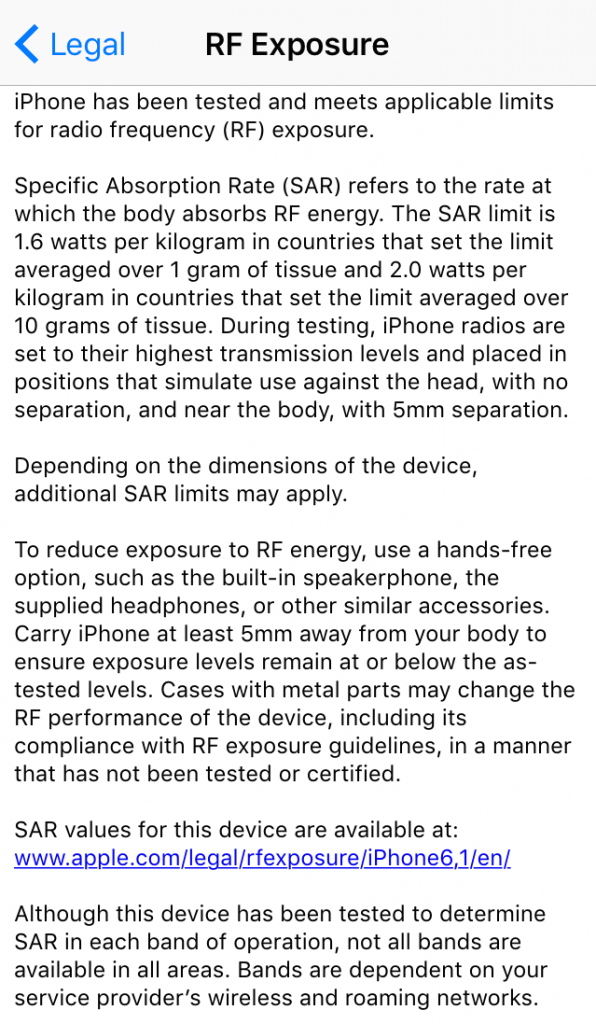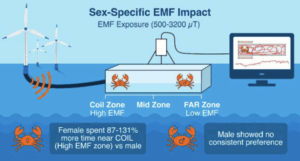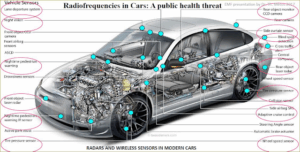As moms, we try to be conscious of what our kids are exposed to, whether that’s the ingredients
in the snacks they eat, the chemicals in their shampoos, or how safe their toys are. One thing we often overlook is the hidden danger of electromagnetic field (EMF) radiation from the devices they use every day, from cell phones and tablets to Wi-Fi routers and Bluetooth accessories.
While invisible, their EMF emissions aren’t a secret. These everyday devices come with fine print warnings, and these tiny, often-overlooked disclaimers can make a big difference in a family’s health.

What Are “Fine Print Warnings” on Electronic Devices?
If you dig through the user manual of your device or explore the legal section under your device’s settings, you might come across a section on “RF Exposure.” This is where tech manufacturers explain proper handling and describe the minimum distance devices must be kept away from the body in order to stay within the radiofrequency (RF) exposure limits.
These warnings are meant to inform us about the Specific Absorption Rate (SAR) of electromagnetic radiation. SAR measures how much radiation our body absorbs when using the device. The problem is, there are different regulations surrounding acceptable SAR limits, and current testing practices do not take into account a large percentage of the population – specifically children.

Specific Absorption Rate (SAR) Limits
Different countries have their own standards for SAR limits. In the U.S., the Federal Communications Commission (FCC) sets the maximum SAR limit at 1.6 watts per kilogram (W/kg) averaged over 1 gram of tissue. In Europe, however, they use a limit of 2.0 W/kg averaged over 10 grams of tissue. This means that devices tested in one region might meet those safety guidelines but could exceed them in another. This was seen in 2023 when France banned the sale of the iPhone 12 because it exceeded the legal SAR limits.
How Are SAR Limits Tested?
To determine whether a device falls within a safe SAR limit, devices are tested using a model filled with a liquid that simulates human tissue. This model is known as a “specific anthropomorphic mannequin,” and is designed to represent an average adult. The device is held in various positions around the mannequin, then the amount of RF energy absorbed by the liquid is measured using probes. If this amount falls below the SAR limit, it is considered safe.
However, this “specific anthropomorphic mannequin” is designed to mimic an adult’s body. So while we know how much radiation is absorbed by an average-sized adult, this does not tell us how much radiation a child’s body is absorbing.
What Research Says About EMF Exposure
Studies have shown that prolonged exposure to EMF radiation may lead to health issues such as sleep disturbances, headaches, mental health challenges, and potentially more serious concerns like cancer. While research is still ongoing, the information out there is reason enough to start taking precautions. Children are particularly vulnerable to the effects of EMF exposure because their skulls are thinner, and their brains are still developing.
Where to Find the Fine Print Warnings
With all the emerging research pointing to potential health impacts of EMF exposure, you’d think these warnings would be front-and-center. But the truth is, fine print warnings are there to protect manufacturers more than they are to protect us. Tech companies have to include these disclaimers to stay compliant with regulations, but they are often hard to find.
These fine print warnings can often be found in user manuals, or in the “Legal” or “Regulatory” sections on the device’s settings page. Most devices have a PDF of their user guides available online, so open the document up and do a search for “RF” or “Radiofrequency” to find the information about the device’s RF emissions. The Environmental Health Trust has also compiled a running list of RF warnings from a wide selection of cell phones and wireless devices.
Protecting Your Family from EMF Exposure
These fine print warnings prove that we should stay mindful of how we use our devices, and we can model these safe tech practices for our children. Small steps can have a big impact over time, so implementing these changes now can significantly reduce our children’s long-term exposure to EMF radiation.
Learn more about EMF exposure and daily steps to reduce your exposure along with protection options here.








